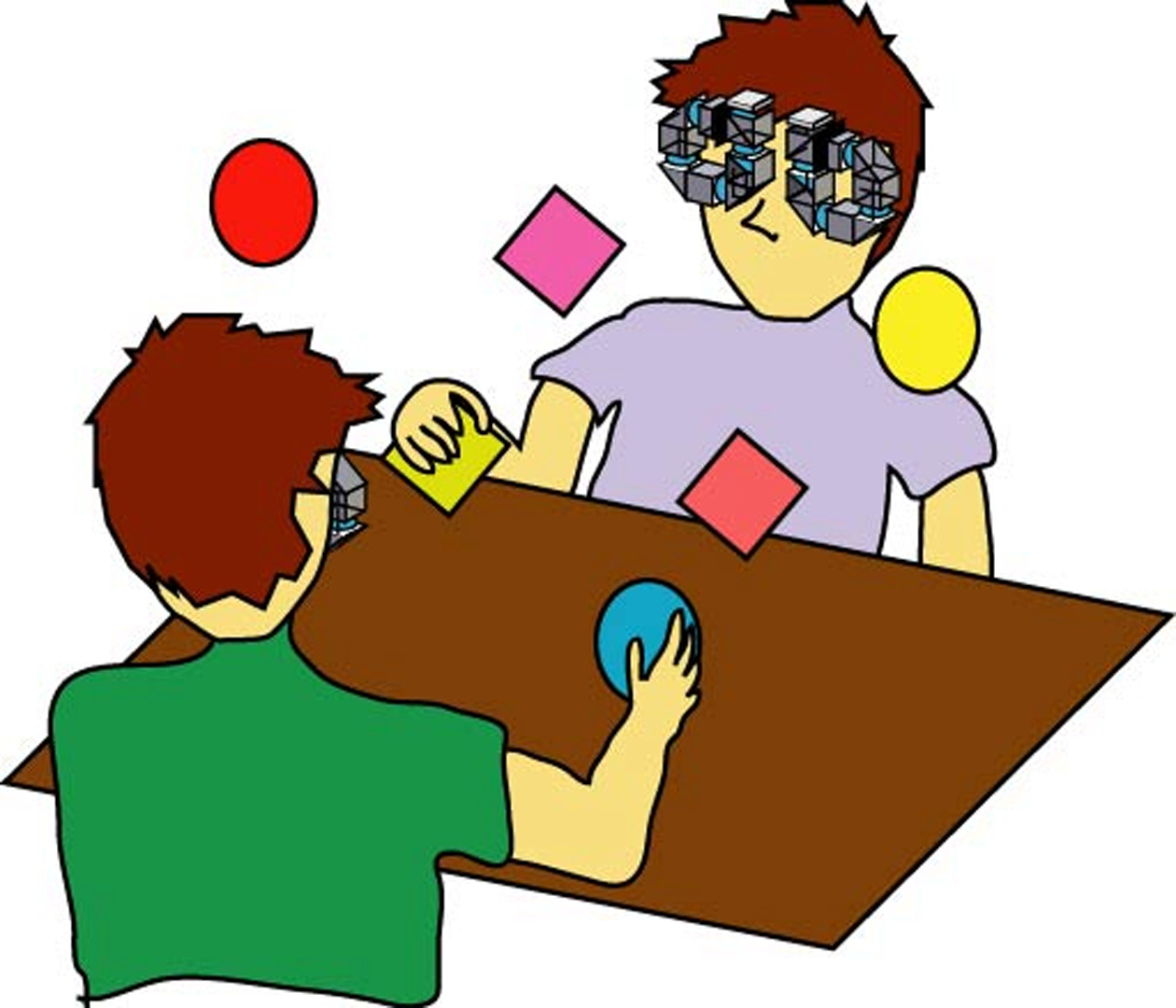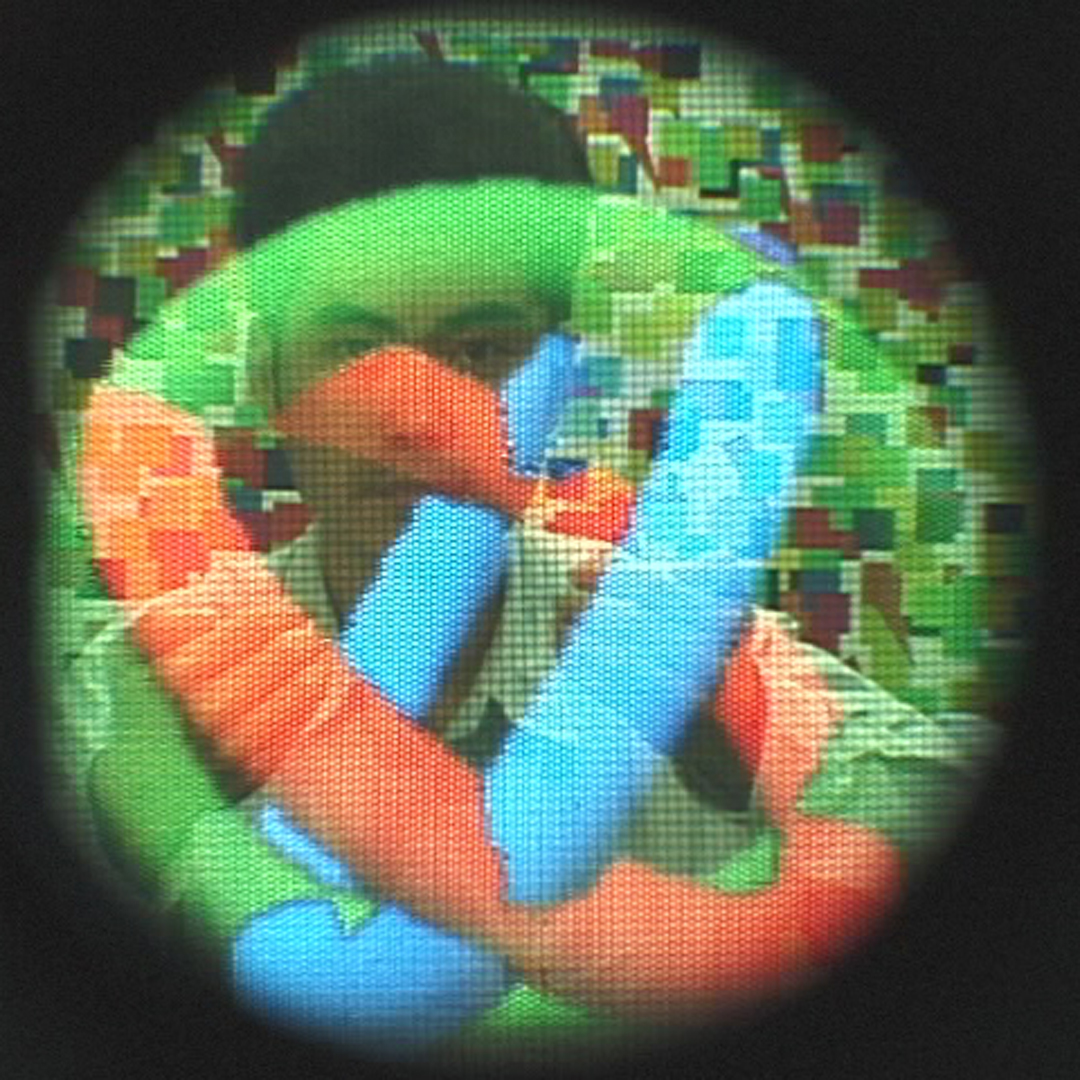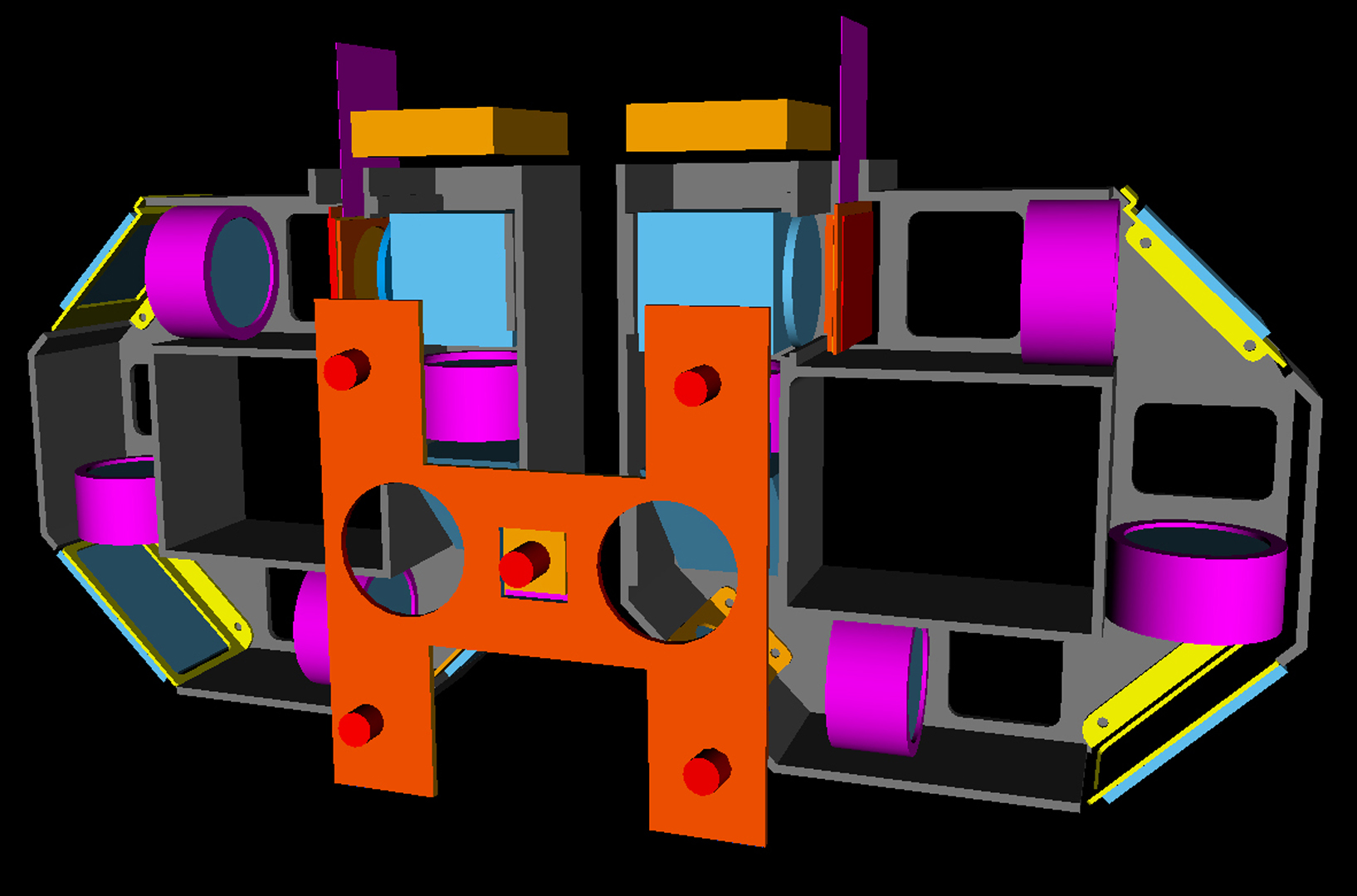“Occlusive Optical See-through Displays in a Collaborative Setup” by Kiyokawa, Ohno and Kurata
Conference:
- SIGGRAPH 2002
-
More from SIGGRAPH 2002:


Type(s):
E-Tech Type(s):
- Displays & Projection
Entry Number: 74
Title:
- Occlusive Optical See-through Displays in a Collaborative Setup
Presenter(s):
Description:
Introduction
There are several approaches to realize a 3D display that can be viewed by multiple co-located users, and each has its own pros and cons. A volumetric display utilizes afterimage effects, and it usually can only show transparent images within its volume. Some projection-based systems support independent viewpoints for more than two users [1], however, virtual objects can be shown only within a viewing frustum in front of the screen. On the other hand, head mount display (HMD) based Augmented Reality (AR) can show virtual objects at arbitrary locations [2]. Besides, an HMD can potentially show correct occlusion phenomena between virtual and real scenes. While a video see-through HMD severely degrades the quality of the real scene and adds a certain system delay, an optical see-through HMD keeps the intrinsic quality of the real scene. However, a virtual scene had to be a semi-transparent ghost due to a half-silvered optical combiner so far.
ELMO: Our occlusive optical see-through HMD
Our optical see-through HMD, ELMO, is capable of showing opaque virtual objects, by using a secondary LCD to properly block incoming lights on a pixel basis [3]. Fig 1 shows a typical ghost image (left) and opaque virtual objects with correct occlusion attributes (right). ELMO realizes a 3D collaborative workspace that has the following three advantages.
1) Unlike with a video see-through HMD, a user can see non-digitized real collaborators to have superior awareness and to receive natural non-verbal communication cues.
2) Unlike with a fixed display, virtual objects can be shown anywhere in the workspace, e.g., between two users’ faces.
3) Unlike with a conventional optical see-through HMD, virtual objects can be transparent or opaque, as demanded by a certain task.
We have newly designed ELMO-4 that has lighter (1.5kg) and smaller optics, enough to wear, with absolutely no viewing offset (See Fig 2).
Exhibition
Fig 3 shows a layout of the exhibition. Users of this exhibition will enjoy a collaborative AR environment in which they can see realistic opaque virtual models in a non-digitized real world. In the environment, users will see virtual objects flying around them, which cannot be realized by a volumetric display or a projection-based display. They will also see a virtual object covering further partners’ face and being covered by closer hands properly, which is impossible with a conventional optical see-through display. Users will notice the real world is naturally and clearly visible, as it is supposed to be, which will help them feel they co-exist in the real world, not in a video world.
Even though users still have to wear cumbersome devices, our collaborative environment has many important advantages for natural and flexible face-to-face 3D collaborative activities, which have never been combined all together before.
Other Information:
References
1. Bimber, O., Frohlich, B., Schmalstieg, D., and Encarnacao,
L.M., “The Virtual Showcase,” IEEE Computer Graphics &
Applications, vol. 21, no.6, pp. 48-55, 2001.
2. Schmalsteig, D., Fuhrmann, A., Szalavari, Z., Gervautz, M.,
“Studierstube – An Environment for Collaboration in
Augmented Reality,” CVE ’96 Workshop Proceedings, 1996.
3. Kiyokawa, K., Kurata, Y., and Ohno, H., “An Optical
See-through Display for Mutual Occlusion with a Real-time
Stereo Vision System,” Elsevier Computer & Graphics,
Special Issue on “Mixed Realities – Beyond Conventions“,
Vol.25, No.5, pp.2765-779, 2001.
Additional Images:








